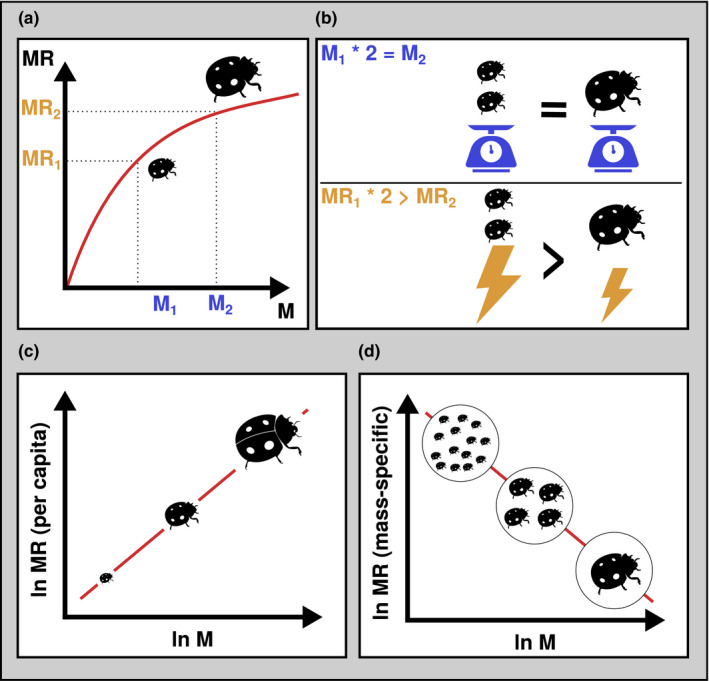FIGURE 3.

Metabolic rate (MR) is the rate of “energy uptake, transformation and allocation” (Brown et al. (2004), metabolic theory of ecology). It is directly related to each organism's energy demand and, as the “fundamental biological rate” (Brown et al., 2004) determines many other physiological and ecological rates of an organism. It scales with body mass (M) and temperature (not shown here) according to a power law (a). (a) Nonlinear relationship between body mass and metabolic rate. Using two example animals from (a) (with masses M1 and M2 and metabolic rates MR1 and MR2), (b) illustrates how body masses and metabolic rates are not related by the same factor. This means that, while per‐capita metabolic rate increases with body mass, mass‐specific metabolic rate decreases. In other words, the metabolic demand of one large individual is lower than the joint metabolic demand of several smaller individuals with the same cumulative biomass: Per‐capita metabolic rate increases with body mass (M) following a power law (c), but mass‐specific metabolic rate declines with body mass (d). All else being equal (environment, taxonomy, etc.), the metabolic demand of a large individual is higher than that of a small individual (c). However, the joint metabolic demand of a group of small‐bodied individuals is higher than that of a smaller number of larger‐bodied individuals with the same cumulative biomass (d). For icon sources, please refer to acknowledgements
